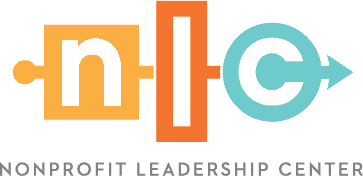Dear funders: Nonprofits need your support to include human capital needs.
At least, that’s what the Center for Effective Philanthropy’s most recent report confirmed. State of Nonprofits in 2023: What Funders Need to Know revealed the top concern among nonprofit executives is staff-related issues, including burnout, filling staff positions and retaining staff.
- 3 in 4 nonprofit leaders indicated difficulty filling staff positions in the past year.
- 1 in 4 nonprofit leaders saw more staff leave than is typical in the past year.
- 22% of nonprofit leaders experiencing staff challenges cited difficulty meeting staff pay and benefits expectations.
- Some leaders reported staffing challenges affecting their nonprofits’ ability to achieve impact.
Despite nonprofits’ current concerns with hiring and retention, compensation and pay equity, and capacity shortages and burnout, they also offered potential solutions to address these challenges. Among the solutions — increased organizational capacity building and professional development, specifically strategic planning, development and skills training.
6 Reasons Funders Should Invest in Nonprofit Training & Development
As a nonprofit that exists to support the capacity, growth and success of other nonprofits, the Nonprofit Leadership Center believes leadership and lifelong learning are inextricably linked. Training and talent development are critical for every nonprofit’s success and sustainability.
But how do you convince a funder to invest in increased organizational capacity and professional development? Use these six outcomes in your next grant request or funder conversation to make the case for more training and development support.
1. Enhanced Organizational Effectiveness
Training and development programs equip nonprofit leaders at every level of the organization with the necessary skills, knowledge and tools to perform their roles effectively. By investing in training, organizations can improve their efficiency, productivity and performance — and retain their best people. Well-trained team members are more likely to make informed decisions, adapt to changing circumstances, and deliver high-quality services to their beneficiaries and our communities.
READ NEXT: Beyond Employee Training: How to Create a Learning Culture
2. Improved Leadership and Management
Nonprofit leaders are vital in guiding their organizations toward achieving their missions. Funding support for training and development enables leaders to enhance their strategic planning, financial management, fundraising and board governance skills. Strong leadership and management capabilities contribute to organizational stability, growth and long-term impact.
3. Increased Innovation and Adaptability
The nonprofit sector operates in a dynamic and ever-changing environment. To address emerging challenges and seize new opportunities, organizations must foster a culture of innovation and adaptability. Training and development programs can help team members develop creative problem-solving skills, embrace new technologies/systems/processes, and stay current on the latest trends and leading practices in their respective fields.
4. Enhanced Fundraising and Resource Development
Nonprofits rely on fundraising to support their programs and initiatives. Training in fundraising techniques, donor stewardship and grant writing can significantly enhance an organization’s ability to secure funding from diverse sources. By investing in training and development, funders can help nonprofits build sustainable revenue streams and reduce their dependence on limited funding sources.
5. Stronger Governance and Board Effectiveness
Nonprofit boards are critical in providing oversight, strategic guidance and accountability. Funding support for training and development can empower board members to fulfill their responsibilities effectively. Training programs can cover topics such as governance best practices, legal and ethical obligations, financial oversight, and board-staff relations, ensuring that boards are well-equipped to support and advance the organization’s mission.
6. Increased Collaboration and Collective Impact
Nonprofits often work collaboratively with other organizations, government agencies and community stakeholders to address complex social issues. Training and development programs can foster skills such as negotiation, communication and partnership building, enabling nonprofits to form effective collaborations and achieve greater collective impact.
By investing in training, funders and individuals can support nonprofits in building strong networks and maximizing their collaborative efforts.
Funding support for training and development in the nonprofit sector is essential for its long-term success and sustainability — ultimately leading to positive social change and stronger communities. That’s a case worth making.
Explore Upcoming Nonprofit Training Events
The Nonprofit Leadership Center offers hundreds of learning experiences each year for nonprofit leaders at every level, from seasoned CEOs to new professionals just starting out.
Explore our upcoming classes and certificate programs.


